A Tofu Tail, a quirky puzzle game about a man turned into a block of tofu by a kitsune, is the first game to come out of the alchemedium indie game studio. It has been generally well-received so far, coming in as a finalist in two categories at Let’s Play PA 2015, and was selected to be showcased at BostonFIG 2014, Seattle Indies Expo 2015, and (most recently) MAGFest 2016. It’s projected to be released in the second quarter of 2016 and alchemedium is currently trying to get the game greenlit on Steam.
The game itself certainly sounds whimsical and unique, if the Steam description is any indication:
“Help Mr. Tofu traverse the surreal, puzzle realms of the foxes to break his curse and get back his true form! Get lost in color-mazes, leap to new paths with the Tengu, avoid the bouncer Oni as you dance through the disco club, befriend the strange Kappa creatures in the Volcano Realm, help Mr. Tofu become one with his soul, and even break science warping through spacetime!”
Having played the demo at MAGFest I can certainly say that the game is fun to look at, listen to, and play. Afterwards, I got in touch with Ryan Brolley, the president and co-founder of alchemedium, to ask him a few questions about A Tofu Tail.
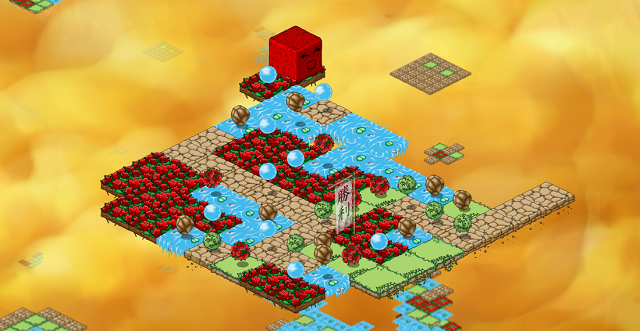
ZN: Your studio’s first game, A Tofu Tail, is heavily influenced by Japanese folklore. Why did you pick Japanese folklore in particular for this game?
RB: The group of us are personally huge fans of storytelling and world building in general, which attributes to a main design goal for A Tofu Tail (well… all of our projects, really) – to have a tightly weaved and immersive world. We had the curious problem to solve: find an intriguing way to make our already strange puzzle game-mechanics make sense in the game world. How were we to construct a story in which a usually inanimate object is sentient, intelligent, and motivated to solve odd puzzles?
From the beginning we knew that we wanted to have strongly unique and interesting characters; but after throwing a few ideas around for an antagonist and basic story, we were not generating anything that was at all remarkable or interesting… Our best concept up to the time was a fireball-looking wizard guy who turns you into a cube – none of us grew at all attached to the idea.
While reading some old Japanese folklore and ancient Shinto texts, I stumbled upon one folktale in particular that tells of fox spirits with many tails, called the Kitsune, playing tricks on humans in the woods, bending the world to their will. And its favorite food is tofu. And BAM. Things started to fall into place!
Our antagonist became the trickster Kitsune foxes, manipulating the world around the player with their illusions, creating these mazes and puzzles to test the mettle of the protagonist. Our protagonist would be a person turned into a cube of tofu – a Kitsune’s favorite food – trying to gain back their true human form. And like tofu, the player would be absorbing the properties of things around them to change their color based on the element orbs acquired.
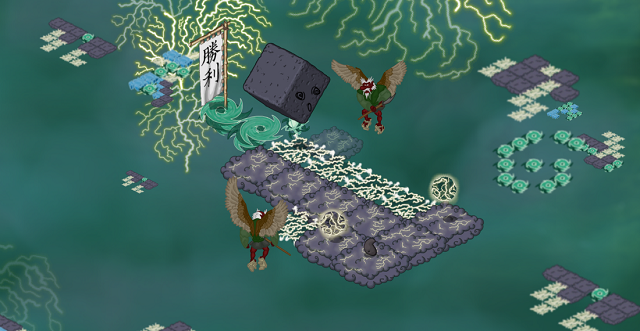
ZN: How did you first get the idea for a rolling block puzzle game involving tofu and a curse?
RB: We had a few game ideas at the beginning, but all were pretty grandiose and seemed difficult to just jump into for our first game. High speed platformers, Zelda-like adventures, vast procedurally generated dungeon crawlers… These aren’t something to attempt for a first game and expect it to be good and playable, while also trying to keep your sanity through the development process!
As a team, we sat down and discussed where we want to be and how to get there. We had previously attempted an adventure game – and that first attempt taught us a lot – mainly that we had no idea what we were doing! Our first obvious goal was to learn the basics.
Spending a few weeks throwing ideas around for some basic games, we settled on one that seemed simple enough to learn game programming, art and music asset creation, and game design. The idea was to create procedurally generated mazes, with its core objective to navigate an avatar through a color-constrained maze by collecting pickups to change color. The basic algorithm for generating these mazes was simple, letting us focus on learning.
And boy, was it a learning experience…
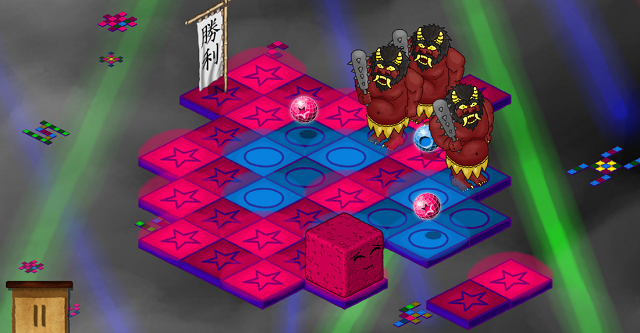
ZN: On alchemedium’s website you say that none of the team had any experience in making games before, so in what ways has making A Tofu Tail been a learning experience?
RB: Ahhh… Making A Tofu Tail was a learning experience in every way possible. We’ve learned so much more than we had imagined was involved; things we completely overlooked and didn’t consider as part of starting (and maintaining) a game development business. More recently: artistic creator copyright law, show demo and booth material logistics, and properly managing marketing. You wear so many hats when there are only a few of you. And those hats can be really, ridiculously large hats.
You learn the hard skills and techniques one would expect to learn while making a game – game engines, drawing techniques, coding practices, etc – but there was one very important lesson that sits on top for this project:
Scope creep is a real monster to keep in check!
We had set out to make a simple and quick puzzle game, and ended up making a whole world for Mr. Tofu and fifteen characters, seven different realms, 100 puzzle levels, and 16 full-fledged music tracks. We definitely let things get out of hand. But – no regrets! We have learned so many priceless lessons in doing so, and think we created something with a lot of depth and charm, as well.
While game development is definitely hard – it can also be amazingly rewarding!
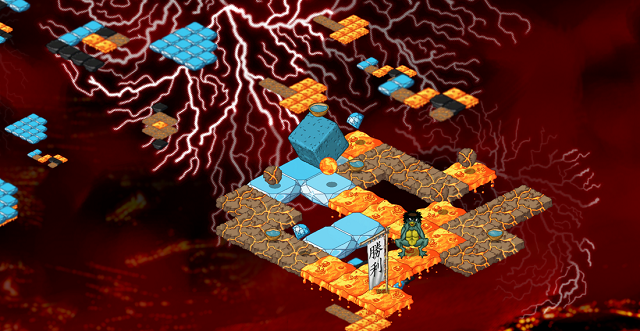
ZN: Why did you decide to use a hand-drawn art style for this game?
RB: The art in A Tofu Tail has definitely been influenced by a several Japanese inspired art pieces – Okami, Muramasa: The Demon Blade, and traditional Sumi-e wood prints. It was important to us to follow these themes, while also throwing in a unique touch of our own.
We had no spare cash to invest in hiring an artist, and working full time jobs left us with less time to invest ourselves in learning new skills. I’ve been free-hand drawing and sketching for years just as a hobby, so utilizing that pre-existing skill seemed to be a given.
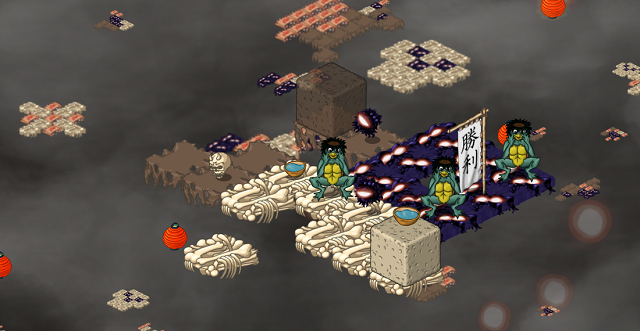
ZN: What’s your favorite thing about this game?
RB: My favorite thing about A Tofu Tail is probably the narrative and the world building that we have fleshed out over the course of development. I know for myself, I have found a new passion in creating new worlds and people to reside, interact, and experience within them. It is also a start to a much larger universe that my team and I have been concocting over the past few years.
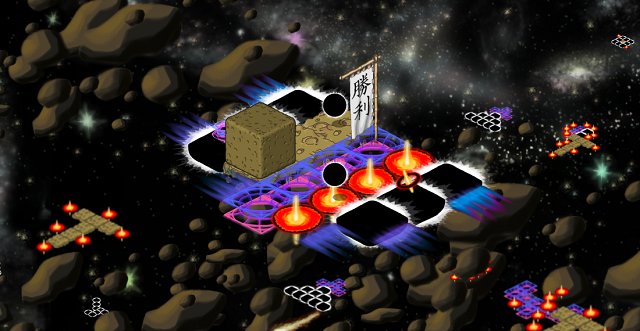
ZN: Is there anything else you’d like our readers to know about A Tofu Tail?
RB: A Tofu Tail is a narrative-driven maze/puzzle game coming to Windows, Mac, Linux, Android, and more. We are currently working through Steam Greenlight, and any ‘Yes’ votes would be super awesome!
You can get updates (with demos, soundtrack downloads, etc) by joining the mailing list, follow @alchemedium on Twitter, as well as pre-order A Tofu Tail on the game’s website.
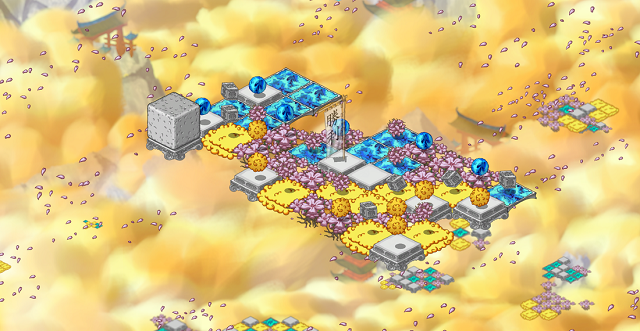
You can vote for A Tofu Tail on Steam Greenlight here.






Published: Mar 8, 2016 02:11 pm